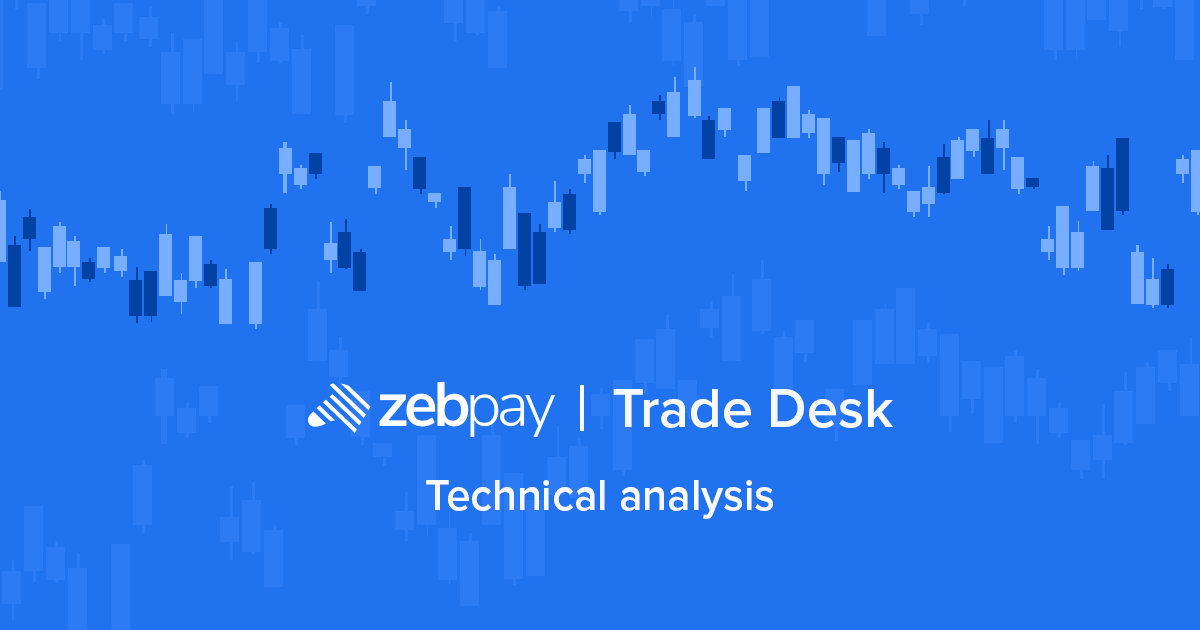23 September, 2020 | ZebPay Trade-Desk
Introduction to Long/Short Strategy
About Long/Short Strategy
A long/short strategy is an investment strategy that hedge funds employ frequently. It involves taking long positions in assets whose value is expected to increase and short positions in assets that are expected to decrease in value. Put another way, hedge fund managers take long positions on assets they believe to be undervalued, and go short on assets that seem overvalued.
- Long Position: If the asset increases in value, an investor will profit from it.
- Short Position: If the asset declines in value, an investor will profit from it.
Ideally, the long position will increase in value, and the short position will decline in value. If this happens, and the positions are of equal size, the hedge fund will benefit. However, the strategy works even when the long position declines in value, provided the long position outperforms the short position. Thus, the aim of a long-short strategy is to reduce market risk exposure, and gain from the spread between two assets on which a position has been taken.
The concept is simple: Investment research helps to identify potential winners, and losers. So why not diversify, and bet on both, and reduce your exposure?
Long/short strategies exploit profit opportunities in both potential upside and downside expected price moves. One takes a long position in the expected winners as collateral to finance short positions in the potential losers. The combined portfolio creates more opportunities for idiosyncratic (asset-specific) gains, reducing market risk by shorting the long market exposure.
Long/short trading is essentially an extension of pairs trading, in which investors go long and short on two competing companies, in the same industry based on their relative valuations. It is a relatively low-risk leveraged bet based on an investor’s ability to pick the right asset. Long/short equity hedge funds typically have net long market exposure, because most managers do not hedge their entire long market value with short positions.
In a nutshell, the long/short investment strategy seeks to play on the traditional long-only investing chain of thought, by taking advantage of the potential upside from assets identified as both undervalued and overvalued. The goal in this investment strategy is to be able to identify and take a long position in underpriced assets while selling short overpriced assets.
Implications for the Crypto Assets Marketplace
Trading in the crypto assets marketplace is relatively straightforward, and with exchanges operating 24/7, trades can be executed quickly. The vast reach, better insulation from global events, and the potential gains to be made given their volatility, provide incentive for continued interest and investment.
These characteristics allow crypto assets markets to provide an existing tailor-made platform by offering cross asset pairs of the same industry which directly or indirectly gives an exposure to the trader, and thus presents an opportunity for a trader/investor to employ the rather sophisticated long-short hedge fund strategy.
Using the ETH/BTC pair to invariably deploy the long-short sophisticated hedge-fund strategy
ETH/BTC Currency Pair
Let’s say that after conducting some exhaustive research, an investor believes that the ETH/BTC pair is fundamentally a stronger asset pair to trade in. A trader might be Bullish on $1000 worth of ETH relative to BTC. The net market exposure is zero, but if ETH outperforms BTC, the trader will make money no matter what happens in the market.
Say, ETH appreciates 25%, and BTC appreciates 20%. The trader will long ETH for $1250, and cover the BTC short for $1200, and hence makes $50. If ETH falls 25%, and BTC falls 30%, he shorts ETH for $750, covers the BTC short for $700, and still makes $50.
However, if the trader is wrong, and BTC outperforms ETH, he will lose money.
On the other hand, the trader might be Bearish on ETH relative to BTC. The net market exposure is still zero, but in this case, ETH must underperform relative to BTC, and in that case traders will make money no matter what happens in the market.
However, if the trader is wrong, and ETH outperforms BTC, he will lose money.
ETH/BTC Pair in Practice
The table and price chart below shows the ETH/BTC pair, and it’s movement of the past week. Hypothetically, if an investor chose to employ a long/short hedging strategy, this is how his/her trade would have looked:
| ETH/BTC Pair | |||
| Position | 15 Sept Open Price | 22 Sept Close Price | % Gain/Loss |
| Long | 0.03478 | 0.03281 | -5.65% |
| Short | 0.03478 | 0.03281 | 5.99% |
Source: https://www.coingecko.com/en/coins/ethereum/btc
Hypothetically, if an investor would have been bullish on the ETH/BTC pair over the past week, he/she would have seen a loss of 5.65% on their position, as the pair has been a depreciation in value. But by hedging their bet, an investor could have been bearish on the ETH/BTC pair, over the past week, he/she would have got a ROI of ~6% on their position, as the pair’s price fell, thereby reducing their exposure to the market, and coming out with a net gain in the trade. In absolute terms, the return would depend on which side of the trade the investor has put their larger bet on (net long or short position), that is, are they net bullish or bearish on the pair.
In any case, if the investor had a net short position, it would have been a good call, and in case they had a net long position, the hedge would have helped reducing the net loss.
ETH/BTC Pair – Scenario Analysis
Hypothetically, if an investor chose to employ a long/short hedging strategy, this is how his/her trade would have looked, under these different scenarios:
| Avg. ETH/BTC Open Price | Avg. ETH/BTC Close Price | ROI(%) | |
| Scenario 1 | 0.01813814 | 0.03268789 | 80.22% |
| Scenario 2 | 0.02593955 | 0.02600056 | 0.24% |
| Scenario 3 | 0.02568399 | 0.02571217 | 0.11% |
- Scenario 1 – Investor went long on ETH/BTC Pair on 01/01/2020 and exited the position on 22/09/2020.
- Scenario 2 – Monthly Averaging, the investor went long on ETH/BTC Pair at the start of every month, and closed position at the end of the month this year.
- Scenario 3 – Investor went long everyday, and exited position the same day based on the closing price.
If the investor/trader believes that the ETH/BTC pair is fundamentally a stronger asset pair to trade in, he/she might have been Bullish on the pair right from the start of the year, in which case could have experienced phenomenal returns, ~80% ROI. This is due to the fact that ETH has seen a high of 0.03992, this year, up from a low of 0.01748. As of today, the daily average volatility in the ETH/BTC pair is ~-0.0013.
The table below shows how the ETH/BTC pair has evolved over the past year:
| ETH/BTC Pair | ||||
| High | Low | Range | % Range Volatility | |
| 1M | 0.04033 | 0.03196 | 0.00837 | 26.19% |
| 3M | 0.03981 | 0.02446 | 0.01535 | 62.76% |
| YTD | 0.03992 | 0.01748 | 0.02244 | 128.38% |
| 1YR | 0.03992 | 0.01763 | 0.02229 | 126.43% |
The 2017 Bull – Markets
In 2017, the cryptocurrency markets witnessed a strong bullish market, and euphoria set in, but the market has seen correction since then. The ETH/BTC pair saw a peak price of 0.1502, and a low of 0.00817 in 2017. In this case, the table compares the maximum and minimum thresholds.
Had an investor gone long on the ETH/BTC pair in 2017, he/she would have seen significant appreciation and ROIs. Now, as ETH has corrected and fallen since, relative to BTC, which means less BTC can be traded for more ETH in return. However, in such situations, when markets are so volatile, it is difficult to predict which way the pendulum will swing.
| ETC/BTC Pair | ||||
| Max. High | Min. Low | Range | % Range Volatility | |
| 2017 | 0.1502 | 0.008174 | 0.14203 | 1737.53% |
| 2018 | 0.113054 | 0.025935 | 0.08712 | 335.91% |
| 2019 | 0.04052 | 0.016388 | 0.02413 | 147.25% |
| 2020 | 0.039921 | 0.017477 | 0.02244 | 128.42% |
Post 2018 however, and after some correction took place, a look at the top two cryptocurrencies by market cap from a higher time frame seems to indicate both forming bearish patterns despite the rising prices.
Hence, had an investor bet on the ETH/BTC pair, when prices were holding high, they would have certainly had a lot to lose.
Login now to start trading! New here? Here’s a step-by-step guide to making your first trade.
References:
https://www.ft.com/content/0108e48a-0279-11dd-9388-000077b07658
https://www.barclayhedge.com/insider/hedge-fund-strategy-long-short-equity.
https://www.investopedia.com/terms/l/long-shortequity.asp
https://www.investopedia.com/articles/investing/111313/multiple-strategies-hedge-funds.asp
https://www.coingecko.com/en/coins/ethereum/btc
https://www.cointree.com/learn/cryptoassets-exchange/crypto assets-exchange-vs-stock-exchange.
Disclaimer :
This report is not intended to be relied upon as advice to investors or potential investors and does not take into account the investment objectives, financial situation or needs of any investor. All investors should consider such factors in consultation with a professional advisor of their choosing when deciding if an investment is appropriate. The Company has prepared this report based on information available to it, including information derived from public sources that have not been independently verified. No representation or warranty, express or implied, is provided in relation to the fairness, accuracy, correctness, completeness or reliability of the information, opinions or conclusions expressed herein. This report is preliminary and subject to change; the Company undertakes no obligation to update or revise the reports to reflect events or circumstances that arise after the date it is published and/or to reflect the occurrence of unanticipated events. Trading & investments in cryptocurrencies viz. Bitcoin, Bitcoin Cash, Ethereum etc.are very speculative and are subject to market risks. The analysis by Author is for informational purposes only and should not be treated as investment advice.


